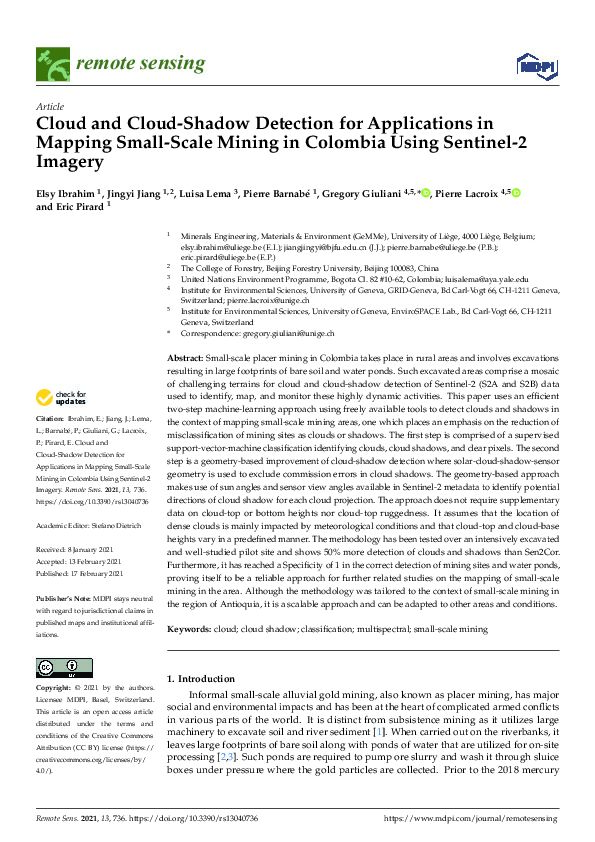Cloud and Cloud-Shadow Detection for Applications in Mapping Small-Scale Mining in Colombia Using Sentinel-2 Imagery
Description
Small-scale placer mining in Colombia takes place in rural areas and involves excavations resulting in large footprints of bare soil and water ponds. Such excavated areas comprise a mosaic of challenging terrains for cloud and cloud shadow detection of Sentinel-2 (S2A and S2B) data used to identify, map, and monitor these highly dynamic activities. This paper uses an efficient two-step machine-learning approach using freely available tools to detect clouds and shadows in the context of mapping small-scale mining areas, one which places an emphasis on the reduction of misclassification of mining sites as clouds or shadows. The first step is comprised of a supervised support-vector-machine classification identifying clouds, cloud shadows, and clear pixels. The second step is a geometry-based improvement of cloud-shadow detection where solar-cloud shadow-sensor geometry is used to exclude commission errors in cloud shadows. The geometry-based approach makes use of sun angles and sensor view angles available in Sentinel-2 metadata to identify potential directions of cloud shadow for each cloud projection. The approach does not require supplementary data on cloud-top or bottom heights nor cloud-top ruggedness. It assumes that the location of dense clouds is mainly impacted by meteorological conditions and that cloud-top and cloud-base heights vary in a predefined manner. The methodology has been tested over an intensively excavated and well-studied pilot site and shows 50% more detection of clouds and shadows than Sen2Cor. Furthermore, it has reached a Specificity of 1 in the correct detection of mining sites and water ponds, proving itself to be a reliable approach for further related studies on the mapping of small-scale mining in the area. Although the methodology was tailored to the context of small-scale mining in the region of Antioquia, it is a scalable approach and can be adapted to other areas and conditions.
